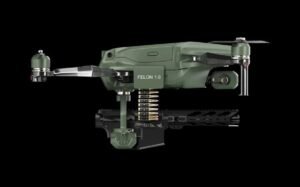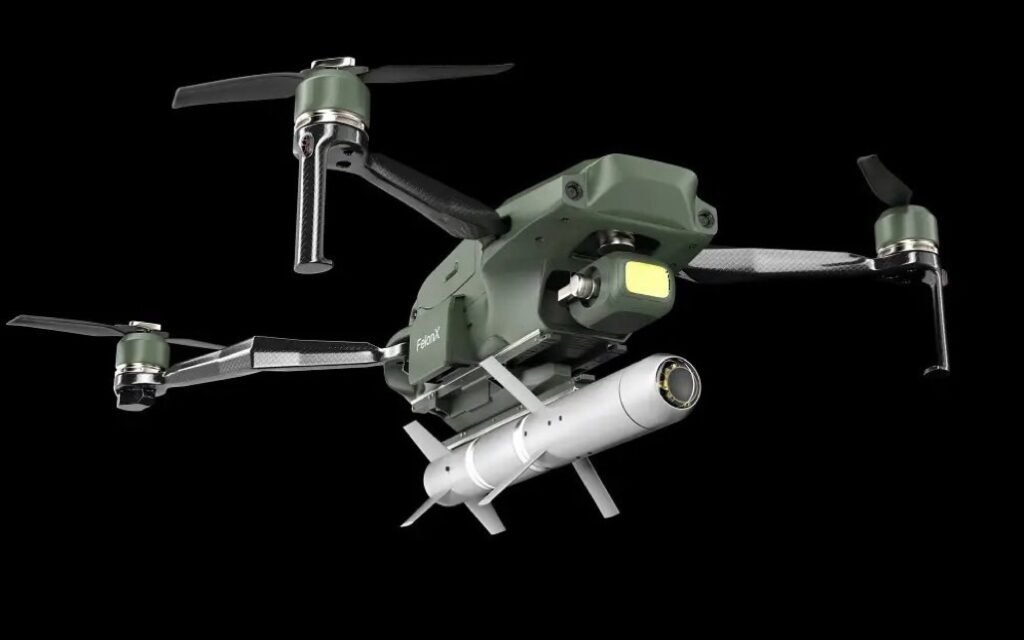The proliferation of advanced weaponized drones, such as those recently developed by companies like Feloni Aero for military use, presents new challenges and security risks when considered in domestic environments. While these drones offer significant advantages on the battlefield, their capabilities also raise substantial concerns regarding privacy, safety, and misuse within civilian contexts.

Potential for Misuse
Advanced drones equipped with weaponry and surveillance technologies, originally intended for military applications, can potentially be repurposed for unauthorized or illegal activities. The risk of these drones being used for targeted attacks or for carrying out assassinations cannot be ignored. Their ability to operate discreetly and efficiently makes them an attractive tool for criminal elements looking to exploit these capabilities.
Surveillance Concerns
The integration of high-resolution cameras, facial recognition technology, and other surveillance tools into drones can lead to significant breaches of privacy. In domestic settings, the use of such drones by unauthorized entities could lead to unauthorized monitoring of individuals, raising legal and ethical questions about the right to privacy and civil liberties.
Regulatory Challenges
As drone technology advances, current regulatory frameworks may struggle to keep pace. The lack of specific legislation addressing the use of weaponized drones in non-military settings complicates the ability to manage these devices effectively. This gap can lead to a legal grey area, where the misuse of drones may not be adequately punishable under current laws, thus encouraging their misuse.
Security Protocols and Countermeasures
To mitigate these risks, it is imperative to develop robust security protocols and counter-drone technologies. The establishment of no-fly zones, drone registration requirements, and strict penalties for misuse are essential. Additionally, developing counter-drone technology that can neutralize rogue drones safely is crucial to protecting sensitive areas and high-profile events from potential drone attacks.
Feloni Aero’s Strategic Innovation
- Introduction of Weaponized Drones: Detailing the features of the new drones which include advanced weaponry, missile capabilities, and enhanced surveillance.
- Technological Specifications: Analysis of the 5.56 weapon system and missile payload options.

Support from the U.S. Government
- Impact of the U.S. Spending Bill: Exploration of how the recent legislation supports Ukraine’s defense needs.
- Bilateral Defense Relations: The role of this support in strengthening U.S.-Ukraine defense ties.
Advanced Surveillance and Precision
- Reconnaissance Capabilities: How the drones’ surveillance technology aids in accurate intelligence gathering.
- Precision Strikes: Discussion on the UAVs’ ability to perform targeted attacks with minimal collateral damage.
Feloni Aero Weaponized Drone Specifications
Model Name: Feloni Aero Defender X-56
Primary Function: Tactical Surveillance and Combat
Weight:
- Empty: 350 kg
- Maximum Takeoff Weight: 700 kg
Dimensions:
- Wingspan: 12 meters
- Length: 8 meters
- Height: 2.5 meters




Power Plant:
- Type: Hybrid Electric Turbine
- Output: 300 kW
Performance:
- Maximum Speed: 220 km/h
- Cruise Speed: 150 km/h
- Endurance: Up to 18 hours
- Operational Ceiling: 15,000 feet
Armament:
- Standard Loadout: 5.56 mm weapon system
- Missile Capabilities: Up to four anti-tank guided missiles or precision-guided bombs
- Payload Capacity: 200 kg
Surveillance and Reconnaissance:
- Sensors: Multi-spectral targeting system
- Camera Types: High-definition, thermal, and night vision
- Data Link: Secure, real-time video transmission to ground stations and mobile units
Countermeasure Capabilities:
- Millimeter Wave Radar: Detects and tracks small UAVs and other aerial threats
- Countermeasures: ECM (Electronic Counter Measures) and flares for threat evasion
Navigation:
- GPS Navigation: High-precision GPS for autonomous and manual control
- Autopilot Features: Full autonomy for takeoff, landing, and mission execution
Operational Environment:
- Capable of operating in diverse weather conditions and non-permissive environments
Technological Highlights:
- AI-Enhanced Targeting System: Machine learning algorithms for threat detection and prioritization
- C-UAS Technology: Advanced counter-UAS capabilities using millimeter wave technology to neutralize rogue drones
Deployment:
- Operational Readiness: Quick deployment capabilities and low logistic footprint
- Transportability: Air transportable in standard military cargo aircraft
Manufacturer: Feloni Aero
Counter Drone Technologies
- Millimeter Wave Technology: Examination of the counter-drone system that uses millimeter wave tech to neutralize threats.
- Effectiveness in Sensitive Airspaces: Strategies employed by Feloni Aero to secure critical areas from unauthorized drones.
Historical Insights
- Evolution of Drone Warfare: Tracing the development from early UAVs to the current state-of-the-art systems.
- Previous Deployments in Conflict Zones: Instances where similar technologies have been utilized effectively in other regions.
The introduction of Feloni Aero’s weaponized drones marks a transformative era in Ukraine’s defense strategy. By integrating advanced technologies and support from international allies like the U.S., Ukraine is better equipped to address its security challenges. The precision and flexibility of these drones not only enhance the military’s operational capabilities but also set a new standard in warfare technology. As Feloni Aero continues to innovate and collaborate globally, the future of defense technology appears robust, promising greater stability and security in volatile geopolitical landscapes.

